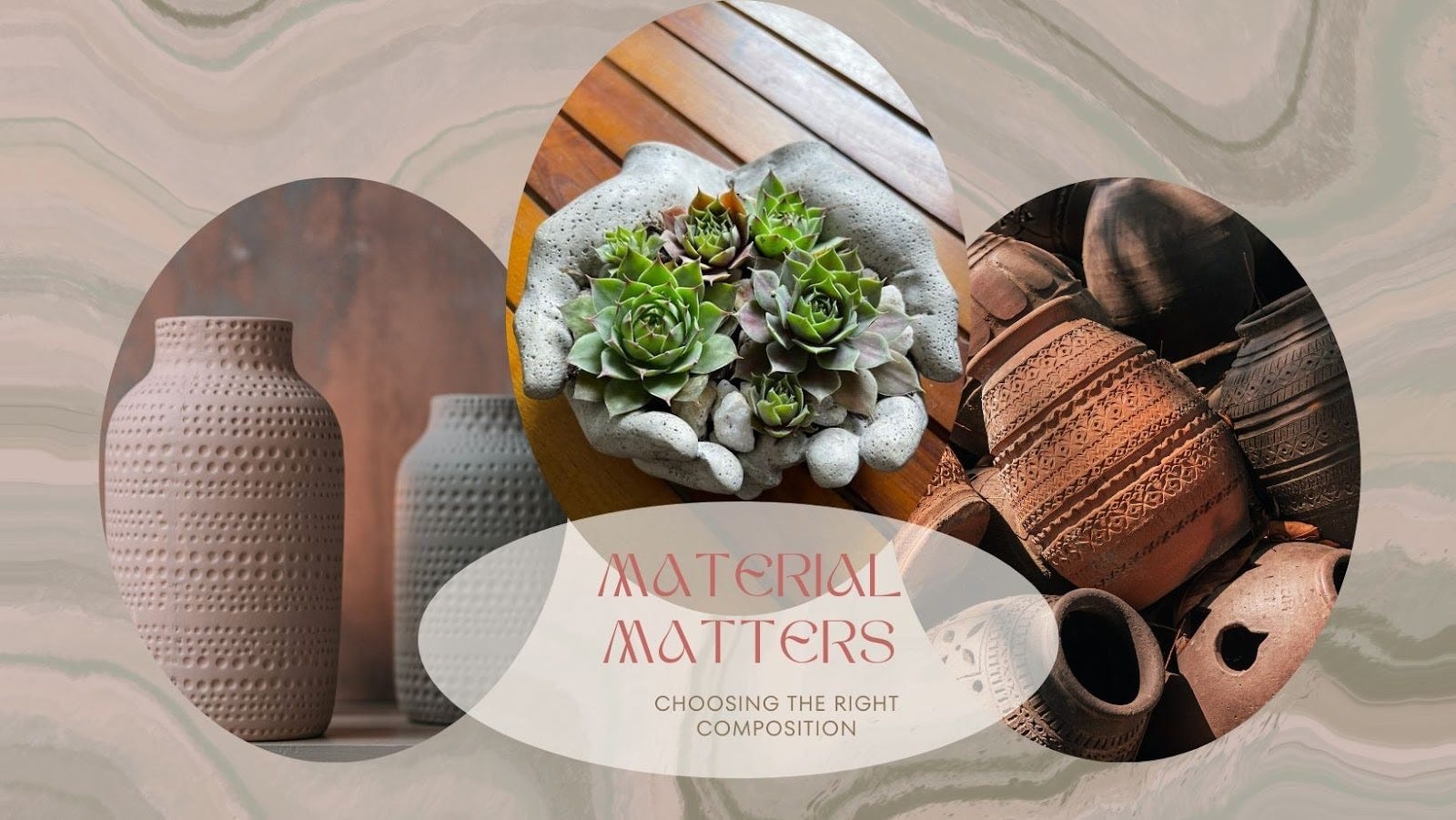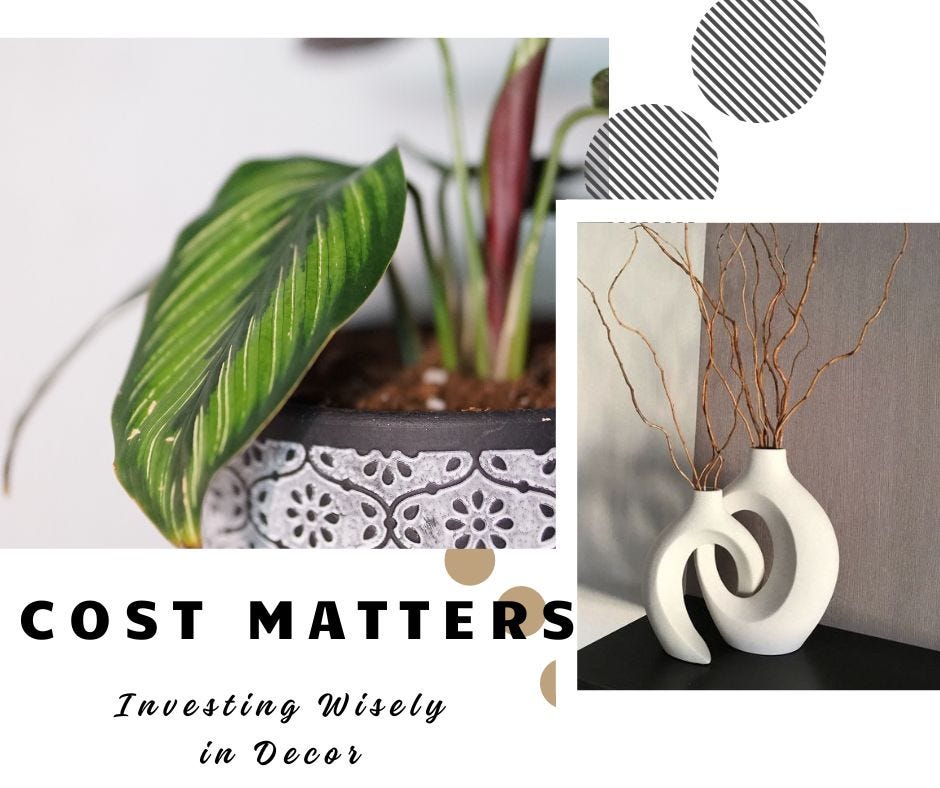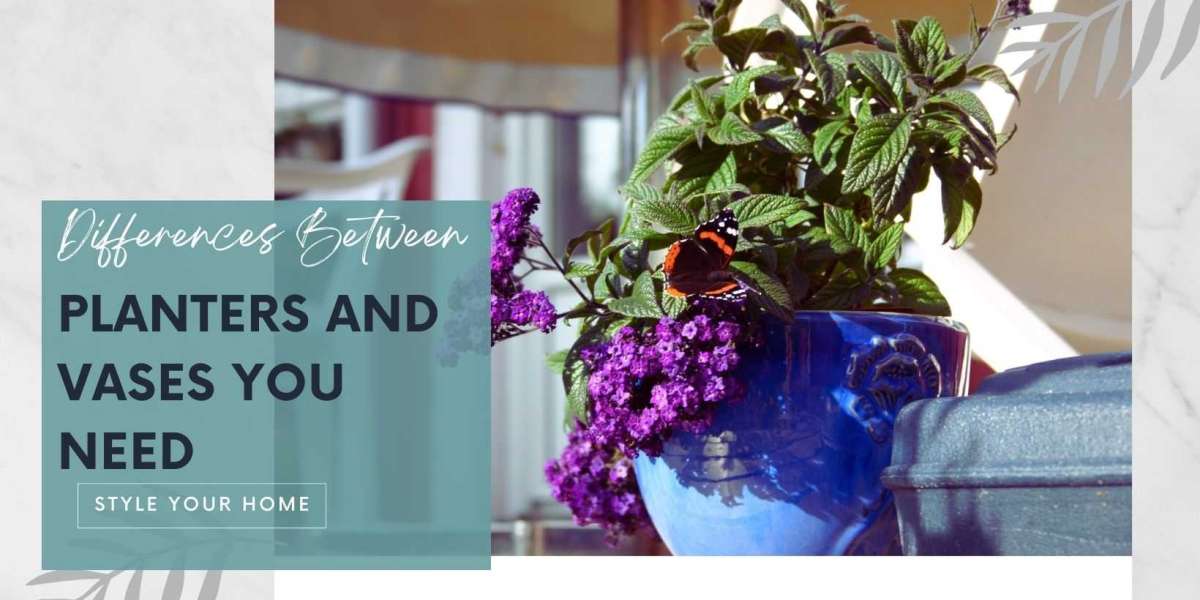When it comes to decorating your space with plants and flowers, choosing the right containers is essential. Planters and vases may seem similar at first glance, but they serve distinct purposes and come with unique features. Let’s delve into the 10 key differences between planters and vases that will help you make informed decisions for your home decor.
Purpose and Functionality
Planters are designed explicitly for planting and nurturing greenery. They often come with drainage holes to maintain the health of your plants. Vases, on the other hand, are crafted for displaying natural flowers, dried flowers or floral arrangements and focusing solely on presentation.
Material Matters:
Planters are typically made from durable materials like ceramic, concrete, fiber or plastic, ensuring longevity and withstanding outdoor conditions. Flower Vases, often delicate, are crafted from glass, metal, marble, resin ceramic, or crystal, focusing on elegance.

Choosing the Right Composition
- Ceramic: Known for its versatility and aesthetic appeal, ceramic is a favored choice for both planters and vases due to its durability and variety of designs.
- Metal: While more commonly used in vases, metal vases are gaining popularity for their modern and sleek appearance, adding an industrial touch to indoor and outdoor spaces.
- Marble: Elegant and luxurious, marble finds its place more in vases, providing a timeless charm to floral arrangements.
- Glass: Often seen in vases, glass provides transparency, allowing for an unobstructed view of the flowers, while also available in some planter designs for a contemporary look.
- Resin: Offering versatility in shapes and designs, resin is used in both vases and planters, providing lightweight options with intricate detailing.
- Fiber: Lightweight and durable, fiber-made planters are excellent for both indoor and outdoor settings, while Terracotta Vases offer a modern and eco-friendly alternative.
- Concrete: Known for its robustness, concrete is commonly utilized in planters, adding an industrial and rustic vibe to spaces.
Design and Style
While planters emphasize functionality, they also boast diverse designs, textures, and colors to complement various decor styles. Vases, however, tend to focus more on enhancing the visual appeal of flower arrangements with intricate patterns and shapes.
Shape and Size

Planters come in various sizes and shapes to accommodate different plants needs, whereas vases often have a narrower neck to support and display flower arrangements elegantly.
Indoor vs. Outdoor Use
Planters are designed to withstand outdoor elements, with materials like concrete, fiber, and metal being particularly suitable. Vases are primarily intended for indoor use due to their delicate nature.
Versatility:
While both can be versatile in their own right, vases offer more flexibility in changing floral arrangements or decorative elements to match evolving interior themes. Planters, once set up, may be less flexible due to the commitment to the planted greenery.
Display Options and Versatility

Planters might be displayed on the floor or tabletops, while vases are commonly showcased on mantels, shelves, or centerpieces. Vases, due to their specific design, offer more versatility in showcasing dried flower arrangements.
Maintenance Requirements
Maintaining planters involves occasional cleaning and repotting for live plants, whereas vases used for dried flowers mainly require dusting and occasional cleaning to preserve their appearance.
Longevity and Durability
While both pot planters and vases made from durable materials can last a long time, the exposure to weather elements might affect outdoor planters more than indoor vases.
Cost:

Due to their size, material, and purpose, planters are often more expensive than vases. The investment in planters is justified by their long-term use and contribution to plant growth, while vases are considered more of a short-term decorative accessory.








